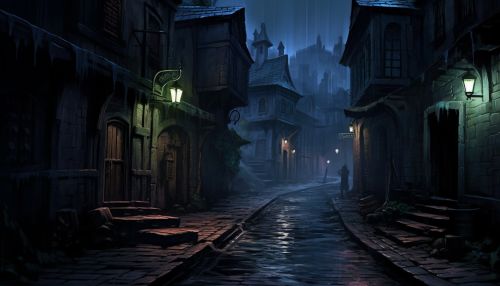Urban legends
Introduction
Urban legends are a type of folklore, consisting of stories thought to be factual by those circulating them. These tales are often rooted in local culture and history, and they frequently contain elements of humor, horror, or moral lessons. Despite their dubious veracity, urban legends are an integral part of any culture's narrative fabric. They reflect societal fears, desires, and anxieties, providing a mirror to the collective psyche of a populace.


Origins and Evolution
The term "urban legend," as we understand it today, originated in the 20th century. However, the phenomenon it describes is as old as human civilization itself. Stories, rumors, and tall tales have always circulated among populations, evolving and adapting to fit the times. The advent of the internet and digital communication has only increased the speed and reach of these narratives, allowing them to spread and mutate at unprecedented rates.
The term itself was popularized by Jan Harold Brunvand, a folklorist who wrote extensively on the subject in the 1980s. Brunvand used the term "urban legend" to describe modern folk tales that often circulate as true stories, despite lacking verifiable evidence. These stories are typically set in the recent past and often contain elements of horror, humor, or cautionary advice.
Classification and Characteristics
Urban legends can be classified into several categories based on their content, structure, and themes. Some of the most common types include:
Horror Legends
These are stories designed to frighten or disturb the listener. They often involve supernatural elements, such as ghosts or monsters, or depict gruesome and horrifying events. Examples include the infamous "Hookman" legend, or tales of haunted houses and cursed objects.
Cautionary Tales
These legends serve as warnings or advice against certain behaviors. They often involve a protagonist who suffers a terrible fate as a result of ignoring warnings or breaking societal norms. Examples include stories about the dangers of hitchhiking, or the infamous "Pop Rocks and Soda" legend.
Humorous Legends
These stories are meant to entertain, often featuring absurd or ridiculous situations. They often involve a misunderstanding or miscommunication that leads to comedic outcomes. Examples include tales of bizarre accidents, or the classic story of the "Vanishing Hitchhiker."
Transmission and Propagation
Urban legends spread through various channels. Traditionally, they were passed down orally, from person to person. However, with the advent of mass media and the internet, these stories can now reach a much wider audience in a shorter amount of time. Social media platforms, email chains, and online forums have become hotbeds for the spread of urban legends, allowing them to evolve and adapt at a rapid pace.
Despite the ease with which these stories can be debunked, they continue to circulate and persist. This is often attributed to their narrative appeal and the underlying psychological mechanisms they tap into. Urban legends often play on common fears and anxieties, making them compelling and relatable. They also serve as a form of social bonding, as sharing and discussing these stories can foster a sense of community and shared experience.
Impact and Significance
Despite their dubious veracity, urban legends have a significant impact on society. They reflect and shape cultural norms and values, and they can influence behavior and perceptions. For instance, cautionary tales can serve as effective deterrents against risky behavior, while horror legends can reinforce societal fears and taboos.
Urban legends also have a significant impact on popular culture. They serve as inspiration for numerous books, films, and television shows, and they often permeate public consciousness to such an extent that they are widely believed to be true.
